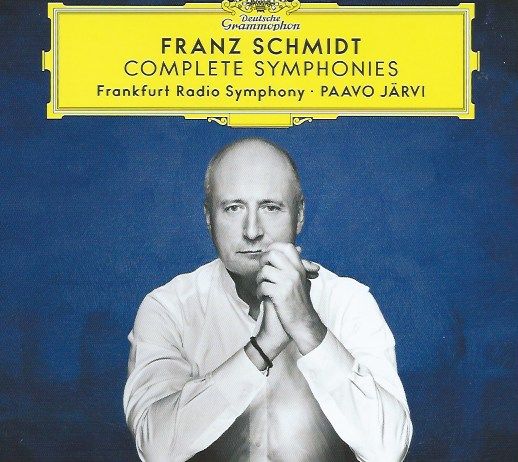Paavo Järvi and the joy of Franz Schmidt
This is when the idea of exploration of the repertoire really comes into its own

While not everyday fare, Franz Schmidt's symphonies have enjoyed two luxury outings at the Proms in recent years: towards the end of the 2015 season, Semyon Bychkov conducted the Vienna Philharmonic in the Second, while the Berliner Philharmoniker with their then-Principal Conductor designate, Kirill Petrenko, offered the Fourth.
However let's, like the Von Trapps, start at the very beginning with the glorious Richard Straussian opulence of the First Symphony. Schmidt was born in Pozsony, Hungary, in 1874 - and, indeed, there is an occasional Hungarian accent to his music - and died near Vienna in 1939. He was a member of the Vienna Court Opera (and the Vienna Philharmonic) in the Gustav Mahler years. While the First Symphony in E major begins with a slow opening that exudes the grandeur of the Baroque in new clothes (Sehr langsam), the fast section (Sehr lebhaft: very lively) is positively swashbuckling, boasting upwardly-aspirant gestures with a Richard Straussian bent, later contrasted with some delicious woodwind writing:
Here, as everywhere in this set, Järvi allows just the right amount of rubato to follow the music's warp and weft. and when it comes to the playful Scherzo (Schnell und leicht: Quickly and lightly), the Frankfurt orchestra excels. Shadows of Weber's Freischütz seem to fall over the music, perhaps a colour left over from the slow movement:
The intensity Schmidt can conjure up in the finale, a set of variations, is remarkable, and when we hear a melody emerge triumphant (it sounds very Schumannesque to me), we begin to appreciate Schmidt the craftsman.
The Second Symphony begins with a movement that reveals the most unique and magical textures before progressing to muscular outbursts that fully befit the huge orchestra he uses:
The second movement is a vast set of variations, including a spectral, decidedly spooky dance, but it is the finale that is fascinating, beginning with a sort of quasi-learned church vibe and leading to a brass-drenched peroration:
The timings of the discs are interesting: by putting a symphony on each of the first two they seem low (45 and 50 minutes, respectively); and then the third disc comes in at a whopping 85 minutes.
The Third Symphony was composed 14 years after the Second: it is more compact, and uses a smaller orchestra, although we do get another set of variations, here much shorter than that in the Second Symphony. It is the Scherzo that demonstrates the lightness of touch in this Third Symphony to a tee though:
Interesting that the church vibe we picked up in the Second Symphony returns in the Lento introduction to the finale of the Third. With its lightness of touch, perhaps the Third symphony is the place to start with Schmidt?
The Fourth Symphony, in C, is the most personal. Despite the "C major" key, it holds great sadness, written after the death of his daughter Emma of a postpartum infection. Indeed, Schmidt called it a "requiem for my daughter". He even writes in a moment of catastrophe: after an intensely beautiful Adagio, the third movement Scherzo hurtles towards this moment of implosion, only for the music rises in the form of a reprise of music from the first movement. Eventually, the music comes full circle and returns to the trumpet solos that opened the work.
The tender beauty of the finale acts as so much balm; in presenting the "catastrophe" in such garish colours, Järvi allows the finale full potency.
There' a filler, too, for this magnificent set: the Intermezzo from the opera Notre Dame, which comes after the Second Symphony. It reminds me of the magical world of Humperdinck's Hänsel und Gretel, with some Zemlinsky added to the mix.
Unsurprisingly there isn't too much competition around, but intriguing that the significant predecessor is Paavo's father, Neeme Järvi. But I have never heard the Frankfurt orchestra on such fine form as under Paavo; and this music is truly revelatory. This is when the idea of exploration of the repertoire, the heart of Classical Explorer's very existence, really comes into its own and the rewards show themselves fully. Plus, at Amazon's price at the time of writing, this seems a steal.
